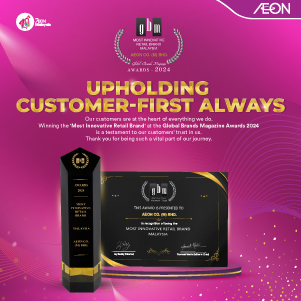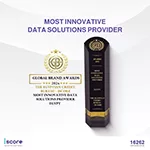Technology
Autofocus Specs: Revolutionising Vision Correction for Near and Far

- Autofocus specs use advanced technologies like liquid crystal lenses and eye-tracking sensors to dynamically adjust focus, offering seamless vision correction for near and far distances.
- While promising comfort and potential eye health benefits, challenges like cost (around £920 for early models), aesthetics, and safety concerns for tasks like driving remain.
Imagine never having to juggle between reading specs, driving specs, or TV spectacles. The annoying head tilt to reach the right focus for a short moment could soon be gone forever. Autofocus specs are a cutting-edge innovation in the field of eyewear, clearing everything so you see crystal clear at any distance. The autofocus-powered lenses look poised to set a new benchmark for sight correction.
Smart specs based on this concept change according to what somebody is gazing at in front of their eyes, granting equal visual opportunities if somebody is flipping through the pages of a book or trying to gaze up at something on a road sign. But how do they work, and are they the future of vision care?
What Are Autofocus Glasses?
If you’ve used bifocals or varifocals, you’ll know how tricky it can be switching focus. Bifocals make you peer through different zones depending on whether you’re reading or looking ahead, while varifocals try to soften the transition—but still demand some awkward head movement.
Autofocus specs are another creature. Instead of foregoing fixed lens zones, the lenses change dynamically across the whole lens surface. You look where you want, and the specs do the rest.
This tech magic is possible thanks to liquid crystal lenses and tiny eye-tracking sensors. A great example comes from Finnish startup IXI, whose specs use liquid crystals that shift with an electric field to bring your view into focus. The built-in eye tracker monitors where you’re looking and adjusts the lens almost instantly.
How Does the Technology Work?
It’s all down to adaptive optics. IXI’s specs emit light pulses to gauge the distance between your eye and the object you’re focusing on. Within a fraction of a second—about 0.2 seconds—the lens adapts, delivering crystal-clear vision whether the object is inches or metres away.
Older models like those from Adlens used a manual system. Users could turn a dial to adjust fluid-filled lenses, but it required effort and wasn’t embraced by opticians. The new generation, like IXI’s, is fully automatic and far more elegant.
Why They’re Getting Everyone Talking
Effortless Clarity
With autofocus glasses, your whole field of view becomes clear. No tilting your head or peering through tiny zones. For those with presbyopia—the age-related condition affecting how eyes shift focus—this could be a revelation. And with estimates suggesting 1.8 billion people may have it by 2050, demand for easier solutions is rising fast.
Everyday Comfort
Forget switching between pairs for reading, computer work, or driving. Autofocus specs adjust as you go, reducing strain and simplifying life. They also help lessen the headaches some people get from progressive lenses, which can distort peripheral vision.
Health Potential
Some experts believe this tech could go beyond just correcting vision. SightGlass, a UK firm, is exploring ways to use contrast adjustments to slow down myopia in children. And Professor Chi-Ho To from Hong Kong Polytechnic University envisions a future where these lenses might even help reverse the progression of some vision issues. It’s an exciting possibility.
The Challenges Ahead
Of course, no innovation comes without its teething problems.
Early models weren’t perfect. IXI’s initial prototypes had some fuzziness at the edges, though newer versions have improved significantly. Safety is another concern. Any delay in the lens adjusting—however slight—could pose risks during sensitive activities like surgery or driving. That’s why IXI ensures their lenses don’t adjust fully across the surface just yet, allowing wearers to look beyond the dynamic area if needed.
There’s also the issue of looks. Many of us remember the lukewarm reception to tech-heavy eyewear like Google Glass. While IXI is working on frames that resemble regular glasses, other designs—such as Vixion’s Vixion01 shown at CES 2025—have been called a bit clunky, even if they’re lightweight and boast a 10-hour battery life.
And then there’s the price tag. Adjustable lens specs in the past sold for around £920, and while the cost of newer models hasn’t been confirmed, it’s likely to remain a premium product, at least for now.
Looking Ahead
The global eyewear market is worth over £150 billion, and it’s ripe for disruption. IXI alone has raised £28 million to push its autofocus tech forward, with 12 patents granted and another 50 in the pipeline. And they’re not alone—Stanford researchers and Japanese firm Vixion are also experimenting with liquid lenses and real-time adjustments.
In the future, autofocus specs could replace bifocals and varifocals entirely. While they’re not yet perfect for people with complex prescriptions like astigmatism, rapid progress is being made. With the help of optometrists and improved design, these specs might soon be the go-to for anyone wanting an easier, more comfortable vision solution.
Should You Try Them?
If you’re tired of switching specs throughout the day or dealing with the quirks of progressive lenses, autofocus specs could be worth considering. Just make sure to get professional advice first, especially if you drive regularly or work in roles where precise vision is crucial.
In Summary
Autofocus specs offer a glimpse into the future of vision correction—one that’s smooth, intuitive, and personalised. While they still have a way to go before becoming mainstream, the benefits are hard to ignore. For many, they could be the clearest choice yet.

























































